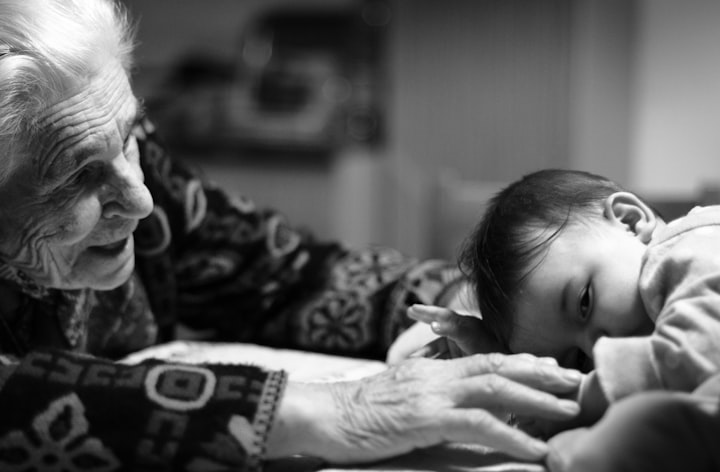
With the increasing popularity of electronic products and improper use of eyes, thereise more and more myopia at a younger age, and parents are worried when looking at their small children with big glasses. Then, parents should come and seize the key period of vision development before the age of 6 to help their children use their eyes correctly with scientific eye care.
Up to the age of one: encourage your child to explore and perceive changes
Babies develop from following objects with their eyes to actively touching them with their hands, and then to seeing through their eyes and directing their hands to perceive and explore. With eye movements, developing vision, and stronger hand-eye coordination, babies begin to learn to crawl and stand, grasp and throw objects on their own.
What should parents do at this stage?
It is important to avoid direct sunlight or light on your baby's eyes at this stage, as they are just starting to develop, so indoor lighting should be soft. Hanging toys for babies should not be fixed in one place to prevent them from always staring at one position. You can use multi-coloured toys and cards to interact with your baby, help your baby to sense different objects and shapes and textures by touching them with their hands, allow your baby plenty of time to explore and crawl and discourage premature upright walking.
When your baby is over 1 year old: strengthening prevention and continued development
As your baby's hand-eye coordination and visual development continue to evolve, it is not advisable to expose your baby to any electronic screens before the age of two. After the age of two, it is also important to control the amount of time spent looking at screens, with a cumulative total of no more than one hour a day, and to take care to take a break every 20 minutes for about half an hour. Try to keep two hours of outdoor activities every day, and try to keep the room brightly lit if you cannot go out due to the weather. Develop good eye habits and take your child for regular systematic eye examinations to rule out amblyopia and strabismus for early detection and treatment.
What should parents do at this stage?
Parents should set an example by watching fewer mobile phones and television and playing more interactive games with their children. They should accompany their children to outdoor activities, such as playing ball games, cycling, and running, and encourage them to do things on their own, such as dressing themselves, playing with clay, cutting and pasting, etc. to exercise hand-eye and overall body coordination.
Parents need to be alert to these signs and two nutrients should not be missing
According to statistics, about 10% of preschool children have some sort of vision problem, which is often overlooked due to the young age of the child and the lack of awareness of parents. When the following conditions occur, it may be a sign that the baby's eyesight is developing, and parents should take the baby to the hospital for a systematic vision check-in time.
1. Squeezing the eyes, rubbing the eyes, tilting the head, or squinting often.
2、See with one eye and the other eye is slanted inward or outward.
3. Hand-eye and body incoordination when playing with balls, throwing objects, or riding a bicycle balance bike.
4. Leans closer and closer when reading a book or watching television
5. Disinterest in colouring or puzzles and resistance to doing fine things.
It is important to pay attention to your child's eye hygiene and to ensure a good eye environment, but it is also important to pay attention to eye nutrition, especially vitamin AD, a key nutrient for vision development.
Adequate vitamin A is essential to ensure the integrity of the epithelial cells of the lacrimal ducts, and only with adequate vitamin A can tear secretion be normalized and the eye remains moist to reduce visual fatigue. Vitamin A is also essential to maintain the structural integrity of the tear film and to maintain a normal refractive error to prevent myopia. In addition, vitamin A helps to synthesise the retinal photoreceptor "retinol", which allows the eye to maintain normal night vision and maintains the integrity of the epithelium and conjunctiva of the foot membrane to reduce the likelihood of eye infections.
Vitamin D, with which we are all familiar, promotes the absorption of calcium, which enhances the regulation of the eye muscles, prevents excessive eye tension and fatigue, and reduces the risk of myopia.
Babies are extremely susceptible to vitamin AD deficiency during infancy and early childhood, and it has been found that the deficiency rate in our child population reaches about 50%. Therefore, parents should pay attention to giving their babies effective vitamin AD supplementation and should start supplementing from birth, according to the supplementation recommended by the pediatrician, at least until the baby is three years old, and also continue to supplement during the critical and sensitive period of the baby's vision development, which can continue until adolescence, not only to prevent myopia but also to enhance their functions and resistance, promote physical and intellectual development as well as prevent iron deficiency in babies It also helps to prevent iron deficiency anemia.






Comments
There are no comments for this story
Be the first to respond and start the conversation.